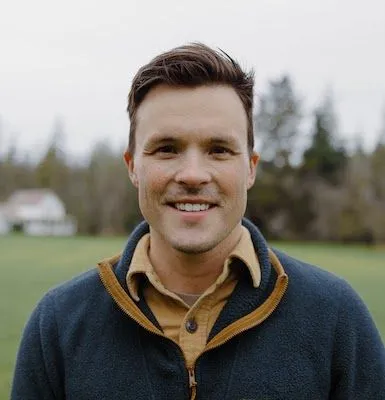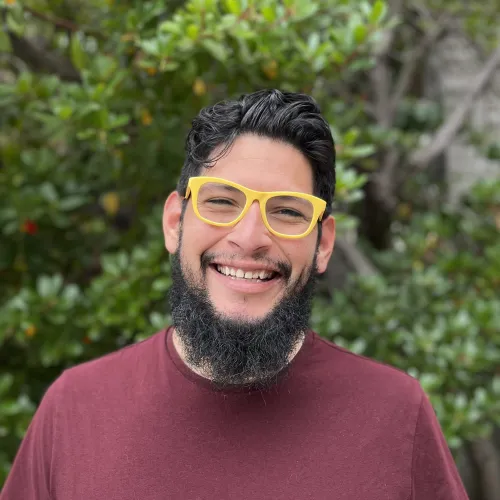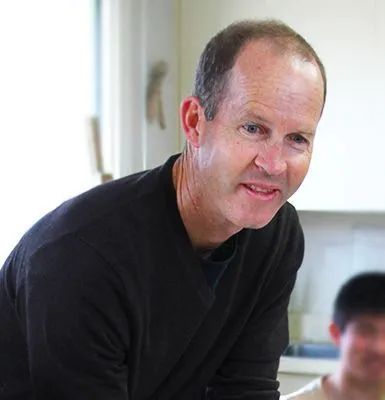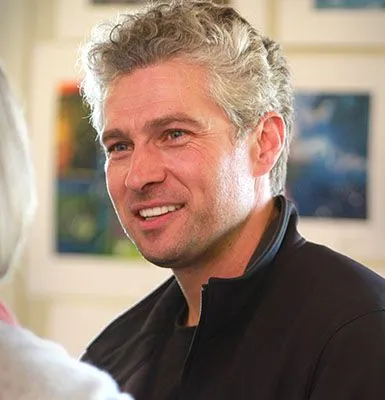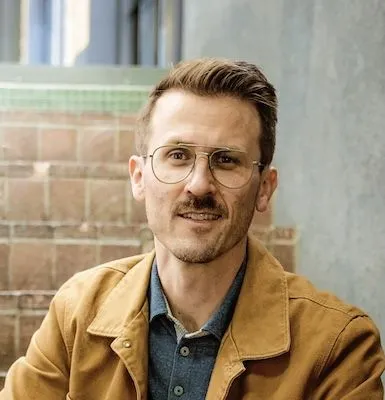Arts at York
The arts play an important role in the life of York School. All our students participate in the arts at some level and many are involved in a wide range of arts activities. With five music ensembles available, students enjoy Choir, Chamber Choir, Concert Band, Jazz Band, and Strings. Our theatre program presents at least one production each year, with opportunities for work in technical theatre. In the visual arts we offer classes in drawing, painting, and digital photography. The art studio is a wonderful place to explore and celebrate the diversity that is so highly valued at York School. All our classes, ensembles, and productions are designed both to be accessible to beginning students and challenging for those more advanced. Beginning students often discover hidden talents in themselves, and students with exceptional ability in the arts, who may be considering college and professional work in the field, will find many rich opportunities at York.
Requirements. In Grade 8, students enroll in Arts 8. In Grades 9-12, students must complete at least one full credit in either visual arts or performing arts. In performing arts, the credit may be attained by completing two years of a music ensemble, which are graded, year-long courses and earn the student 0.5 credit per year. The York School arts requirement also meets the University of California Visual and Performing Arts (VPA) admission requirement.
Courses Available
AP Art allows students to create a portfolio that allows students to show their skills, dedication and originality over the course of a year. Portfolios include works of art and design, process documentation, and written information about the work presented. In May, students submit portfolios for evaluation based on specific criteria, which include skillful synthesis of materials, processes, and ideas and sustained investigation through practice, experimentation, and revision, guided by questions. The work expectations are significant in this advanced class, and the bulk of each project is expected to be completed outside of class.
Arts 8 is an exploration of finding confidence in your own voice. We build that confidence through the mediums of theatre, musical theatre, and music. We start the year with learning about how the theatre works, how to use correct theatrical vocabulary, and feeling comfortable in the physical space. Then we move into communication styles: pantomime, nonverbal, improvisation, monologues and scene work. Then we will work on taking those skills into collaborative presentations about the history of musical theatre. Finally, we take the opportunity to learn a new instrument: the ukulele. This allows students to find their musical voice, by learning the technique to play and sing their own song by the end of the year.
This hands-on course immerses students in the behind-the-scenes world of theatrical production, with a strong focus on set construction and scenic painting. Students will learn how to safely use tools and materials to bring theatrical environments to life, contributing directly to York’s mainstage productions. Depending on the needs of the chosen show for the semester, students may also gain experience in prop design, lighting, and sound. Backstage Theatre emphasizes collaboration, creative problem-solving, and the practical skills that support live performance. No prior experience is required—just a willingness to build, paint, and help shape the visual world of a show.
Chamber Choir is an advanced choral group that is designed to give students the opportunity to sing varied choral literature from a range of styles: traditional, sacred, popular, jazz and musical theatre. Students will study vocal health, pedagogy, and technique, as well as learn basic music theory. They will have the opportunity to perform in a variety of spaces throughout the Monterey Bay area and on tour. Each student will help to create a vibrant, unique arts community that builds on their confidence and creativity while working together to create a powerful collaborative experience.
Our vocal music program starts in Choir I and is devoted to helping students expand their repertoire and achieve new levels of vocal technical skills and creative expression. For those who have never explored music, singing is the perfect place to start. Choir will give students an opportunity to sing varied choral literature from a range of styles that could include: traditional, sacred, popular, jazz, and musical theatre. Students will learn about good vocal health, technique, and pedagogy. York Choir performs at various school events and in the community at large. Participation in Choir is open to everyone regardless of experience or singing ability. Testing for vocal placement is done at the beginning of the year. Students will sing at many different functions throughout the school year that includes Grandparent’s Day, and Winter/Spring Concerts. Students must complete two years of Choir (Choir IA & IB) in order to advance to Choir II.
This course introduces students to the fundamentals of digital design through hands-on creative projects that combine photography, typography, graphic design, and animation. Students will learn industry-standard tools like Adobe Photoshop and After Effects while exploring how digital media shapes our world. Projects include poster design, animated title sequences, and dynamic visual compositions. Emphasis is placed on developing a strong visual voice, understanding the elements of good design, and learning how to communicate ideas clearly and creatively through digital platforms. No prior experience necessary—just curiosity, creativity, and a willingness to experiment.
This class will not only give students the basic technical tools they need to take better photographs but also give them the ability to become a more observant person and to see the visual world in a fresh new way. The journey begins with learning to get the most out of the camera students usually have with them - the one built into phones. Students will tackle the basics of Adobe Photoshop to help refine the photographs they take so that they can reach their fullest potential. Students also learn about the work of a diverse group of photographers from around the globe and how to look at and discuss their work in order for it to inspire their own.
Through ensemble rehearsal, individual practice, and a variety of performance opportunities, students will gain an understanding and appreciation for this unique and exciting art form. By the end of this course, students will have a basic understanding of jazz and the beginning level forms associated with it, and they will be able to perform a variety of standard jazz/popular music repertoire. All instruments are welcome, and Jazz Band makes every attempt to accommodate students at their present level of ability. Students must complete two years of Jazz Band (Jazz Band IA & IB) in order to advance to Jazz Band II.
In this hands-on, project-based course, students will explore the intersection of design, technology, and innovation. Working in York’s Makerspace Design Shop, students will learn to safely use a variety of tools—from laser cutters and 3D printers to hand tools and digital design software—to create functional, artistic, or experimental projects. Emphasis is placed on prototyping, creative problem solving, and design thinking. Projects may include signage, wearable tech, architectural models, or collaborative installations. Whether you’re a tinkerer, an artist, or an inventor, this course offers space to build, test, and bring ideas to life.
How has the American Musical Theatre influenced social movements over the last hundred years? How has Broadway created or supported political statements/movements? What is the future of Broadway and how will it survive? This course will be a deep dive into the historical significance of shows like Oklahoma!, South Pacific, Chicago, Cabaret, RENT, and Hamilton that were on the forefront of change that included conversations about race, mixed marriages, gender, sexuality, AIDS-crisis, slavery, and immigrants. This course will give students an overview of musical theatre history but it will also connect to how musical theatre has influenced history for over a hundred years. There will be readings, discussions, individual and group projects.
This course gives students the opportunity to perform music in a variety of musicals. Students will work to create a “rep book” that will consist of Broadway songs that they will be able to use for future auditions, and performances. They will work at building their repertoire with musical theatre songs pre-1965 and post-1965, and pop/rock songs – building off what college Musical Theatre auditions require. We will present a recital of these songs in December 2025. Concurrent enrollment in Choir or Chamber Choir is suggested. Open to all students of abilities/ranges.
This is an introduction to art with no experience necessary. The class is focused on drawing fundamentals for the first 6 weeks; covering contour, texture, line, gesture, value, and perspective while emphasizing the need to observe and develop coordination between the eyes and hands. Students will research and write about periods in art history that appeal to them, developing personal tastes and preferences, and defending those positions to their peers and teacher. In the second quarter, students are introduced to the modalities of color, printmaking, painting, and sculpture.
In this course students will have the opportunity to further their exploration of drawing mediums. This is the core experience of any artist. The semester will include reductive drawing (using an eraser and graphite powder layers), dry-point etching, the use of charcoal on different surfaces, reductive linoleum prints using three colors, textured drawings using India ink, and more. Exercises will be aided by examples, demos, videos, and guest artists. Research and writing exercises will also be employed as well as weekly critiques.
In this course students will work with a variety of canvas sizes while completing assignments dealing with a specific design element. There is often an emphasis on value, pattern, balance, color, emphasis, texture, or a combination of several elements. Students will use collage, acrylic and oil paints and other mediums while embracing an environment for experimentation. We always start with a still life to learn mixing and matching and further subjects include animals, abstraction, portraiture, the human form, and landscape. These exercises will be interspersed with demos, artist of the week talks, and writing exercises.
Studio Art III allows students to build a portfolio throughout the course of a year. Highlighting this process is a concentration or “sustained investigation” of a particular theme chosen by the student. In this way each portfolio is meant to be personal and evolving with new experiences. Studio Art lll students will develop familiarity with many styles and means of artistic expression that will help encourage original designs. Students will be encouraged to use multiple mediums and a variety of subjects. This is a full-year course that requires a high level of autonomy, motivation, and love for the visual arts. Students are exposed to the art world through field trips to galleries and museums, visiting artists, research, and critiques. This course is recommended to be taken in the junior year in preparation for AP Studio Art in the senior year.
Arts Faculty
Spencer Williams
FacultyARTS DEPARTMENT CHAIR; DIRECTOR OF PERFORMING ARTS; EXPERIENTIAL LEARNING COORDINATOR

